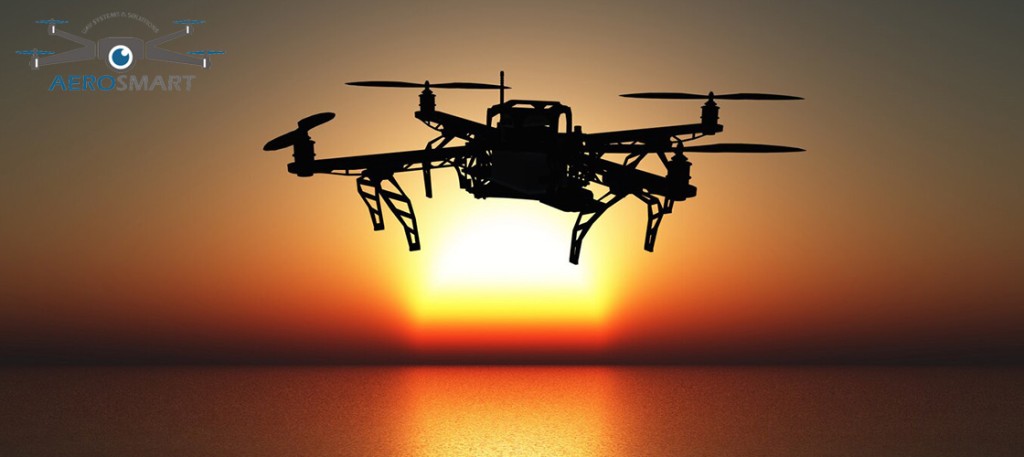
Aero Smart UAV Trading L.L.C. is a tech company that specialises in drones and solutions in the UAE and across the GCC.
Our Office
Office 203, Al Tayer Commercial Building,Rolla Street, Bur Dubai, UAE
Phone:+97142238380
Email:sales@aerosmart.ae

When we talk about technological advancement in various industries, the oil and gas industry has always been in a strong position, driven by the requirement of efficiency, cost reduction and safety. Technology has made its mark in almost every area of both the public and private sectors. Energy is no different and the need for advancement in its functioning has leaped forward because of drones.
Drones in the Energy sector have emerged as a game changer, providing exploration and pipeline inspections to environmental monitoring and security surveillance, drones are revolutionizing the way oil and gas organizations operate. Here, we will find information related to some of the best-suited drones for oil and gas industry.
DJI Matrice 4T
DJI Matrice 359 RTK with Zenmuse H30T
DJI Matrice 30T
It is important to run an inspection from time to time to assess how useful drones are in the oil and gas industry. The assessment is not just for the changes made in the present but also for how the future could bring in a variety of drones through enhanced inspection and maintenance. Nowadays, drones are well-equipped with high-definition cameras providing high-resolution visuals, thermal imaging, and sensors that can perform inspections more accurately.
Drones can offer insight into the most detailed or complex setups in the oil and gas industry, as they can be used to locate gas leaks, infrastructural weaknesses, and corrosion with accurate results. These are great assets that help us find immediate gas leaks and equipment malfunctions using thermal imaging devices that detect any irregular changes in temperature. They are also considered to be cost-effective.
Safety is a top priority in the oil and gas industry, given the high-risk nature of its operations. Drones help mitigate risks by reducing the need for workers to enter dangerous zones, such as offshore platforms, confined spaces, or high-altitude structures.
By using drones, companies can minimize human exposure to hazardous environments, reducing the likelihood of accidents and fatalities. In emergency situations, such as gas leaks or fires, drones can provide real-time situational awareness, enabling quick and informed decision-making.
Oil and gas pipelines span vast distances, often traversing remote and challenging terrains. Monitoring these pipelines for leaks, vandalism, and structural integrity is a daunting task. Drones offer a cost-effective and efficient solution for pipeline surveillance.
Equipped with multispectral and hyperspectral sensors, drones can detect leaks that are invisible to the human eye. Methane-detecting sensors can identify gas leaks from the air, preventing environmental damage and financial losses. Automated drone patrols can also deter vandalism and theft, enhancing the overall security of pipeline infrastructure.
Offshore oil rigs and platforms are among the most challenging environments for maintenance and monitoring. Conducting inspections in such locations is costly and time-consuming, requiring helicopters, boats, and trained personnel. Drones provide a safer and more economical alternative.
By deploying drones, companies can inspect flare stacks, risers, and other offshore structures without shutting down operations. Drones can also assist in asset management by capturing high-resolution images and 3D models of offshore facilities, helping engineers and operators make data-driven decisions.
The oil and gas industry faces stringent environmental regulations, and non-compliance can lead to hefty fines and reputational damage. Drones play a crucial role in ensuring environmental compliance and responding to spills.
Aerial surveys conducted by drones can monitor deforestation, erosion, and habitat destruction caused by oil and gas activities. In the event of an oil spill, drones can quickly assess the extent of the spill, track its movement, and guide cleanup efforts. This rapid response minimizes environmental damage and reduces the overall cost of spill management.
Oil and gas facilities are often targeted for theft, vandalism, and even terrorist activities. Protecting these assets requires round-the-clock surveillance, which can be both expensive and labor-intensive.
Drones equipped with night vision cameras, infrared sensors, and AI-powered analytics can enhance security efforts. Automated drone patrols can detect unauthorized activities and provide real-time alerts to security personnel. By integrating drones with security systems, companies can significantly improve their threat detection capabilities.

Adopting drone technology provides a strong return on investment (ROI) for oil and gas companies. The key cost benefits include:
While drones for oil and gas industry offer immense benefits, their adoption in the oil and gas industry is not without challenges. Some of the key hurdles include:
1. Regulatory Compliance
Governments and aviation authorities have stringent regulations governing drone operations. Companies must obtain permits, adhere to flight restrictions, and ensure compliance with safety standards. Navigating these regulatory frameworks can be complicated and it can consume a lot of time.
2. Data Management and Integration
Drones generate vast amounts of data, including high-resolution images, thermal readings, and 3D models. Managing and integrating this data into existing asset management systems can be challenging. Companies need robust data analytics and artificial intelligence (AI) tools to extract actionable insights from drone data.
3. Technical Limitations
Battery life, payload capacity, and weather conditions, all of these factors can influence drone performance, to a major extent. While advancements in drone technology are addressing these limitations, companies must carefully evaluate drone specifications to meet their operational needs.
4. Cybersecurity Risks
Drones rely on wireless communication and cloud-based data storage, making them vulnerable to cyber threats. Unauthorized access to drone data or control systems could compromise critical infrastructure. Implementing strong cybersecurity measures is essential to mitigate these risks.
The adoption of drones in the oil and gas sector is expected to grow rapidly, driven by advancements in AI, automation, and sensor technology. The future of UAV technology in this industry includes:
Drones are transforming the oil and gas industry by enhancing efficiency, safety, and cost-effectiveness. From inspection and maintenance to security and environmental compliance, UAV technology is proving to be a valuable asset for companies looking to optimize their operations.
As regulatory frameworks evolve and technology advances, the adoption of drones in the oil and gas sector will only continue to expand. Companies that embrace this innovation today will gain a competitive edge, ensuring safer, smarter, and more sustainable operations in the years to come. Aerosmart is a one-stop destination if you are in search of the best drone company in UAE. Check out our website to select the best-suited drone for your requirements.